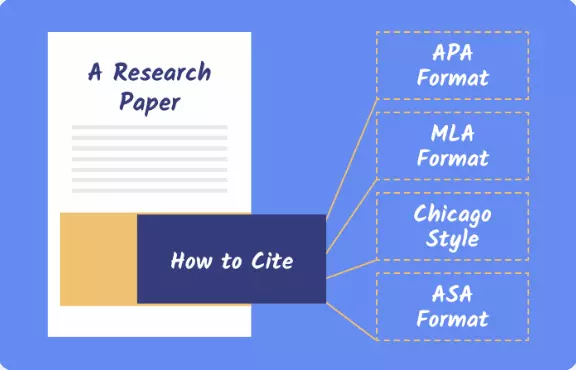For many students, the number of sources required for different types of academic writings is a key concern. However, there is no single recommended number since different essays, papers or term papers have a different number of sources.
This is because the different types of academic writings require a different scope of research and in-depth research will require more sources of information. This article will explore the number of sources required for the various types of academic writing.
However, before we explore that, it is important to first understand why you need sources for your academic writings.
Why Do You Need Sources?
It is very important for students to cite their sources of information when writing academic papers.
This is an academic rule that every student should observe, failure to which the submitted papers get a bad grade or even a zero. Below are some of the common reasons why you need sources.
1. To Avoid Plagiarism
Plagiarism can be regarded as the act of taking another author/writer’s work or ideas and passing them off as your own. This is stealing another person’s intellectual property and it is punishable by law and academically.

Therefore, when you conduct research for your academic writings and use the ideas from those researches without citing them, your paper will be plagiarized.
You are liable to face academic and even legal consequences if the owner of the ideas decides to prosecute you.
You might think that it would be impossible for your instructors to notice that you have plagiarized your paper.
On the contrary, there are plagiarism checking tools that are used by both institutions and instructors to check the presence and level of plagiarism in your papers. They pass your papers through such tools to also determine the sources you have plagiarized your papers from. To avoid this, it is best to use sources in your academic writings.
2. Citations Act as Fact-Checking Tools
Accuracy is very important in academic writings because you are supposed to support your arguments with accurate facts.
For example, when you support your claim in your paper and the instructor looks up a reference to verify the claim, the fact that they find the source of your information acts as an accuracy check.
When you paraphrase and cite the source, it ensures that your text has the fidelity of the source of information because it is verifiable.
When you do this throughout the body of your academic writing, your paper will be credible and it will guarantee a good grade.
3. Citing Makes You a Better Researcher
To come up with good academic writings, you must conduct equally good research. To conduct good research, you must pay attention to detail and have the capability of making connections and discerning patterns.

When you cite sources correctly, it means that you have achieved both.
To correctly attribute the sources of your information, many details have to be put into consideration.
Those include correctly stating the author’s names, give the correct page numbers where you got the information.
Also, give the accuracy of the presented facts and their relevance to your claims and topic.
Attention to detail makes you a better researcher and spotting the patterns and trends during your research makes you a better analyzer of the vast amount of information.
Your instructor can determine how good you are as a researcher through your citations. As such, it is best to include them correctly in your academic writings. All this makes you a better writer while demonstrating your scientific knowledge.
4. To increase credibility as a Scholar
While using citations in your academic writings makes you a better writer and demonstrates your scientific knowledge, the most meaningful role of good citations is to establish the credibility of the writer among their peers within their discipline.
Good and solid sources back up your arguments and bring credibility to the assertions you make. If you document your arguments and research correctly, you will be perceived as a credible writer by your readers.
Optimal Number of Sources for Different Papers
Before proceeding, it should be noted that the length of the paper will also determine the number of sources for different writings.

The longer the writing, the more the sources and vice versa.
1. Research Paper sources
It is recommended that a research paper should have a minimum of 3 peer-reviewed or reliable sources.
This is because the literature review section will require you to review a minimum of three credible sources that relate to your topic.
Other parts of the research paper, like the background information of your topic, the findings, and analysis may require credible sources too. Therefore, a short research paper should have about 3 to 4 sources while a longer research paper can contain between 5 and 10 sources depending on the number of pages and your topic.
2. A Short 5-Paragraph Essay
A five-paragraph essay can be regarded as the basic type of academic writing. It is usually made up of an introduction, three body paragraphs, and a conclusion. The introduction and concluding paragraphs do not require sources. Only the body paragraphs require sources. As such, 2 to 3 sources can work for such an essay.
3. Number of Sources for a Term Paper
A term paper shares many characteristics with a research paper. However, a research paper is longer and more complex compared to a term paper hence the reason why a term paper should have fewer sources than a research paper.
As such, a short-term paper can have between 2-3 sources while a longer-term paper will have about 6-8 sources depending on the length and topic.
4. Sources for a Long Essay
Let us imagine that you have written an essay with more than 10 pages or 3000 words. It should contain more claims and in-depth support to such claims.
Credible arguments should be presented to ensure that the thesis or position of the writer is sufficiently supported. As such, the long essay should contain more sources. A long essay should have between 10 and 15 sources.
5. Capstone Project sources
Since a capstone project serves as the culminating and integrative point in a student’s education, it should be lengthier with a lot of details. It should demonstrate that you have understood the concepts you have learned in school.
As such, it should be thorough with a lot of sources to support your claims. Since it can be between 30 and 40 pages long, the sources can be between 35 and 50. They can even reach 70 depending on the subject.
6. Sources for a PowerPoint Presentation
The number of sources for a PowerPoint presentation depends greatly on the content presented through the topics. Since a topic can cover multiple slides, such slides can contain similar sources of information.
However, it should be noted that a PowerPoint presentation should not contain too many sources because it is just a presentation. Have between 3 and 6 sources depending on the content.
7. Number of sources for Thesis
The number of sources required for a thesis depends on the academic level you are in. The higher the academic level, the more sources you need to support your claims. Therefore, if your thesis has about 30 pages within the body should have no fewer than 30 sources.
8. Dissertation sources
A dissertation should have at least two sources per page of the paper. Therefore, if a dissertation has 30 pages, it should have a minimum of 60 sources and so on.
9. Peer-Reviewed Journal Article sources
There is no limit to the number of sources required in a peer-reviewed journal article. However, there should be about 2 sources for every page in such an article. If it is 20 pages, it should have about 30 to 40 sources.

Joseph is a freelance journalist and a part-time writer with a particular interest in the gig economy. He writes about schooling, college life, and changing trends in education. When not writing, Joseph is hiking or playing chess.
